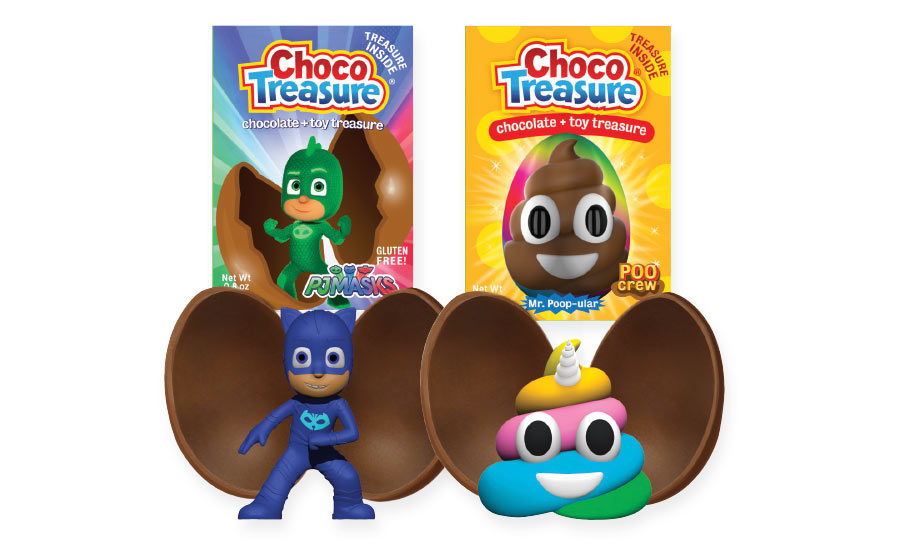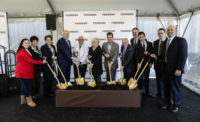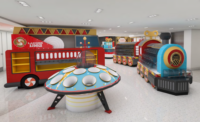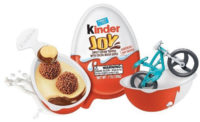The element of surprise didn’t always work in Jared Whetstone’s favor.
Whetstone, brand manager for Florida-based Atlantic Candy Co., said Toy Box, the company’s signature surprise-inside chocolate product, didn’t immediately resonate with retail buyers when it launched in late 2016. He also took it on ABC’s “Shark Tank” that year but walked away without a deal from the show’s panel of investors.
With a milk chocolate shell and a collectible figurine only revealed by pulling back layers of packaging and a protective capsule, Toy Box seemed like it’d be a hit among kids. And it was, earning in 2017 Candy Industry’s Kids Choice Award for Best Novelty Product.
But the adults still needed persuading, Whetstone said.
“I spent many pitches trying to convince store buyers that this category was going to be a real thing in the United States and that the choking concerns and misinformation that were out there at the time were unfounded,” he said.
From Cracker Jacks to cereal boxes, packaging sweets with a surprise is not a new concept, here or abroad. However, pairing candy with a toy or another surprise hasn’t always been met with easy success in the United States.
In July 1997, Nestlé introduced the Nestlé Magic ball, featuring a toy inside of a capsule surrounded by chocolate. The company faced criticism from consumer groups and the U.S. Food and Drug Administration over potential choking hazards, prompting Nestlé to pull the product months later.
Nestlé relaunched the product in 2000 as the Wonder Ball with candy pieces inside, circumventing concerns over including toys. But in 2004, the company sold the brand to Frankford Candy Co., which discontinued it in 2007 after licensing partner Nickelodeon released nutrition guidelines the product couldn’t meet.
Meanwhile, the global confectionery surprise-inside market has been led by Ferrero Group, reportedly selling 3.5 billion Kinder Surprise Eggs in 170 markets each year. But to the chagrin of American Kinder fans, the United States was not one of them, since 80-year-old FDA rules prohibit embedding in confections “non-nutritive” items that don’t have a functional purpose in consuming the product.
Not that that has stopped U.S. Kinder fans from taking matters into their own hands. In 2011, U.S. Customs and Border Protection seized 60,000 Kinder Surprise Eggs from travelers’ baggage and international mail packages. That was double the amount they seized in 2010, the agency reported.
Demand for surprise-inside confectionery products continues to grow, and over the last five years, confectionery companies have stepped in to meet it with FDA-compliant products that carve their own niche out of an exploding market.
And the stakes became even higher in late 2017 with the entrance of Ferrero’s Kinder Joy, the U.S. version of Kinder Surprise Eggs. Featuring the same egg shape, the package has two separately-sealed halves, with one containing a surprise toy and the other containing two hazelnut wafer balls and two layers of cream.
Ferrero sold more than 99 million Kinder Joy units in the year ending Nov. 4, generating $153.8 million, according to IRI, a Chicago-based research firm. Kinder Joy also occupies 89 percent of the novelty chocolate market, as tracked and reported by IRI.
Now surprise-inside confectionery makers have to find ways to stand out.
“Everybody is going to address the competitive nature of the category in their different ways, but I think it’s about innovation,” said Yowie Global CEO Mark Schuessler said. “You’re going to see more innovation in surprise-inside. It’s almost infinite what you can do.”
In 2014, Australia-based Yowie Group Ltd. relaunched the Yowie brand and expanded the presence of its chocolate product in the United States, both because of the size of the market and its relative openness.
“In the U.S., it’s — no pun intended — rather novel because surprise-inside was never a really big part of the category for a long time,” Schuessler said. “We still have a long way to go here. With the expansion of this category, we love the fact that there are a number of surprise-inside entrants because now consumers are focused on it.”
Yowie features 28 grams of milk chocolate moulded around a Yowie character-shaped capsule that contains a collectible, scientifically accurate animal figurine that leads consumers to learn more about ecology and the environment.
In 2018, Yowie partnered with the Wildlife Conservation Society to introduce its fourth collectible series, allowing Yowie to donate a portion of the proceeds in support of the WCS’s global conservation program.
“We are now at the point where we’re not just helping teach people about conservation, we’re giving back as we’ve grown the business,” Schuessler said. “We want to do things that are substantive.”
This year, Yowie will introduce Yowie Bites, which features two 9-gram pieces of Rainforest Alliance-certified, non-GMO milk chocolate, along with animal species collectibles and attachable puzzle pieces that form a map from Australia to Greenland when all are put together.
Conservation isn’t the only angle for breaking through the competitive surprise-inside market. Capitalizing on the popularity of ‘90s nostalgia, Frankford Candy Co. relaunched Wonder Ball in October 2016 under the Despicable Me license, to the joy of its fans. Frankford said the brand had 400,000 social media fans before the relaunch.
Since then, Frankford has introduced Wonder Ball under Disney, Shopkins, Paw Patrol and Spider-Man licenses, among others. The company has also developed Wonder Ball Minis — featuring two 90-calorie chocolate balls and Wonder Ball Plus Prize, which includes a toy.
Over the year ending Nov. 4, Frankford’s Wonder Ball products pulled in more than $11.1 million, according to IRI.
“It’s the surprise appeal. Surprise is a very hot and growing trend,” Stuart Selarnick, ceo of Frankford Candy Co. said in 2016. “Kids get a combination of both chocolate and non-chocolate candy, but the character and the flavor that is inside the chocolate ball is the surprise.”
Around the same time, Atlantic Candy Co. introduced Toy Box, building on past experience of contract manufacturing surprise-inside chocolate products. Whetstone said retailers’ views toward surprise-inside products have shifted over the last year.
“With the arrival of Kinder Joy, I don’t have to sell the concept of a surprise product. It’s proven,” he said. “It’s now about the price, the product and when can (retailers) get it. The new challenge is trying to get on the shelf next to Kinder.”
Whetstone also noted the surprise-inside category isn’t restricted to the store shelf. He pointed to YouTube unboxing videos that feature a child opening a product to reveal the surprise inside. These videos have thousands, if not millions, of views.
“That just sums it up that a second-hand experience has sufficed for the consumer because these products haven’t been readily available,” he said. “Now that they are, this subset of candy is growing.”
Atlantic Candy Co. is also experimenting with incorporating augmented reality components into the Toy Box experience, adding another dimension of play to the product’s collectibles.
“Collecting toys could easily be done mobily, and that could also drive the physical cost of the product down and help you retain that user in a digital platform,” Whetstone said. “That’s where I think the future of this category is going to go. We’re going to try to be one of the first ones there.”
Kevin Gass, co-founder of Candy Treasure, maker of the Choco Treasure brand, also understands the importance of a surprise-inside product’s play value.
“Kids are remarkably particular,” he said. “They can get so excited so quickly, but they can also be disappointed. If they get a toy they can’t put together or get repetitive duplicates, that’s not the experience you’re aiming for. It’s critical to have age-appropriate toys (and) have different types of toys within each collection.”
And the price has to appeal to parents. Gass said falling within the $1.50-$2 range is ideal, making it easy for parents to pop surprise-inside products into shopping carts.
“It has to be a true impulse, everyday-type item,” he said. “Parents have to think the price is a great value for what their getting.”
In addition to producing Choco Treasure items under Shopkins and PJ Masks licenses, Candy Treasure launched the Poo Crew line after seeing success with its emoji series. The favorite among focus groups in that collection? Poo, of course.
“When we showed some people different iterations of poo, it was off the charts,” Gass said. “We came out with a line of tastefully hilarious poo products.”
Whether it’s poo, licensed characters or another draw, surprise-inside products can’t lose sight of the best part: the candy.
“As long as you pair it with a substantial amount of a quality treat, then it’s a win for kids, and parents are happy.”











